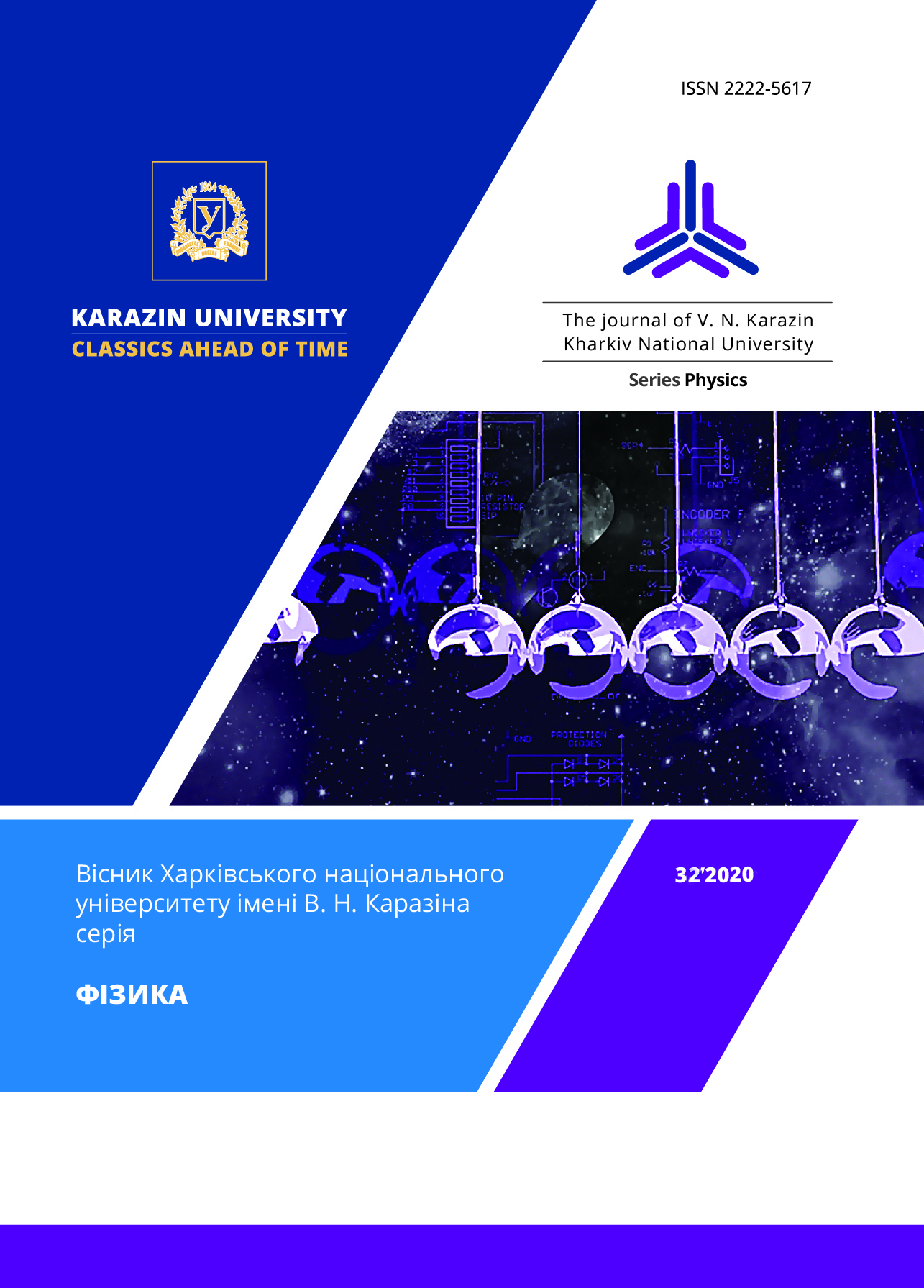Деякі проблеми моделювання лазерно-індукованих філаментів
Анотація
Представлені експериментальні дані формування лазерно-індукованих філаментів в різних середовищах (хлорид калію, вода, повітря і карбід кремнію). Ці явища аналізуються як процеси нелінійної та релаксаційної оптики. Досліджено проблеми моделювання створення об'ємних лазерно-індукованих філаментів. Порівняльний аналіз плазмових, нелінійно-оптичних, дифракційних та інтерференційних явищ (включаючи дифракційне розшарування), ударних процесів (включаючи черенковське випромінювання) і фізико-хімічних процесів (включаючи каскадну модель збудження хімічних зв'язків в режимі насичення збудження), методи і моделі представлені та обговорені. Показано, що оптичний пробій для різних речовин має різну природу: від ударної іонізації газу до руйнування всіх хімічних зв'язків для твердого тіла в області взаємодії світла і речовини або від нерівноважних випромінювальних процесів для газів і рідин до незворотних фазових перетворень в твердому тілі. Для дифракційного розшарування використовувається модифікована модель кілець Релея. Показано, що ця модель дозволяє більш ефективно пояснити експериментальні дані для карбіду кремнію в порівнянні з теорією рухомих фокусів Лугового-Прохорова. Для пояснення генерації неперервного випромінювання використовувалися модифіковані моделі Нільса і Оге Бора (мікроскопічні) і модель Голуба (макроскопічна) черенковського випромінювання. Дифракційне розшарування підтверджує поверхневу конічну природу черенковського випромінювання. Показано, що фізико-хімічний метод оцінки відповідних процесів є більш загальним, ніж електромагнітний (керрівські середовища), і дозволяє з єдиної точки зору пояснити основні особливості ланцюгового процесу. Модифікована модель І. Франка для інтерференції черенковського випромінювання використовувалася для пояснення лазерного оптичного пробою в карбіді кремнію. Модифікована модель Релея і методи механіки суцільних середовищ були створені та використані для оцінки розмірів і форми спостережуваних нановоідов карбіду кремнію. В цілому представлені моделі дозволяють більш повно та адекватно пояснити відповідний ланцюжок явищ в порівнянні з іншими моделями, оскільки враховують нелінійно-оптичне перетворення первинного лазерного випромінювання.
Завантаження
Посилання
Y.R. Shen. Principles of nonlinear optics. (Nauka, Moscow, 1989), 559 p. (И.Р. Шен. Принципы нелинейной оптики. (Наука, Москва)) [In Russian]
Eds. R.W. Boyd, S.G. Lukishova, Y.R. Shen. Self-Focusing: Past and Present. Springer Series: Topics in Applied Physics. Vol. 114. (Springer Verlag, New York, 2009), 605 p.
P.P. Trokhimchuck Relaxed Optics: Modeling and Discussions. (Lambert Academic Publishing, Saarbrukken, 2020), 249 p.
T. Okada, T. Tomita, S. Matsuo, S. Hashimoto, Y. Ishida, S. Kiyama, T. Takahashi. J. Appl. Phys., 106, 054307 (2009).
T. Okada, T. Tomita, S. Matsuo, S. Hashimoto, R. Kashino, T. Ito. Material Science Forum, 725, 19 (2012).
P.P. Trokhimchuck. Relaxed Optics: Realities and Perspectives. (Lambert Academic Publishing, Saarbrukken, 2016), 260 p.
V.P. Veyko, M.N. Libenson, G.G. Chervyakov, E.B. Yakovlev. Interaction laser irradiation and matter. Force optics. (Phyzmatlit, Moscow, 2008), 310p. (В.П. Вейко, М.Н. Либенсон, Г.Г. Червяков, Е.Б. Яковлев. Взаимодействие лазерного излучения и вещества. Силовая оптика. (Физматлит, Москва)) [In Russian]
V.S. Makin. Thesis. Saint-Petersburg (2013), 384 p. [In Russian]
E. Yablonovich Appl. Phys. Lett., 11, 495 (1971)
S. Minardi, A. Gopal, M. Tatarakis, A. Couairon, G. Tamosăuskas, R. Piskarskas, A. Dubietis, P. Di Trapani. Opt. Lett. 33, 1, 86 (2008).
L. Berge, S. Skupin, F. Lederer, G. Mejean, J. Yu, J. Kasparian, E. Salmon, J. P. Wolf, M. Rodrigues, L. Wӧste, R. Bourayou, R. Saurbrey. Phys. Rev. Lett. 92, 22, 225002 (2004).
V. K. Miloslavskiy. Nonlinear Optics. (Karazin University Press, Kharkov, 2008), 312 p. (В.К. Милославский. Нелинейная оптика. (Издательство Каразинского университета, Харьков)) [In Russian]
P. P. Trokhimchuck. IJARPS, 7, 5, 17 (2020).
I. Golub. Optics Letters, 15, 6, 305 (1990).
I.M. Frank. Cherenkov Radiation. Theoretical Aspects, (Nauka, Moscow, 1988), 286p. (И.М. Франк. Черенковское излучение. Теоретические аспекты, (Наука, Москва)) [In Russian]
N. Bohr. The passage of charged particles through matter, (IL, Moscow, 1950), 148 p. (Н. Бор. Прохождение заряженных частиц через вещество, (ИЛ, Москва)) [In Russian]
P. P. Trokhimchuck. IJARPS, 6. 7, 5 (2019).
P. P. Trokhimchuck. Proc. CAOL’2019. IEEE publisher, 437, (2020).








3.gif)
